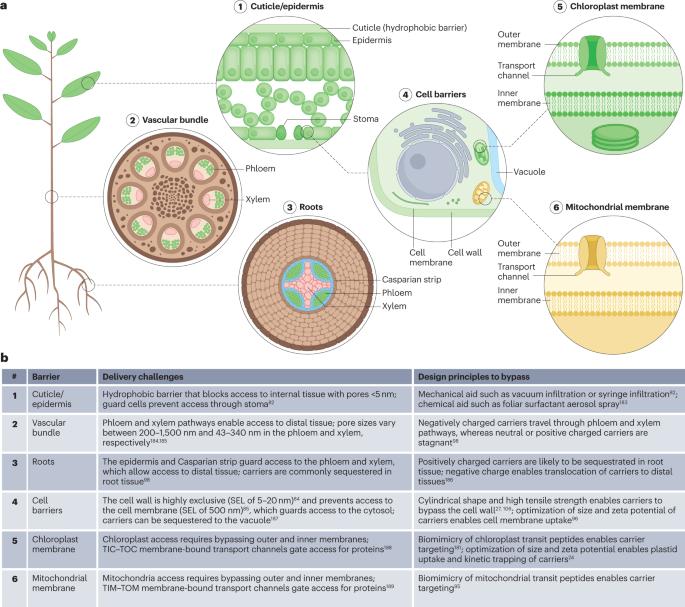The emerging role of nanotechnology in plant genetic engineering
IF 37.6
引用次数: 5
Abstract
Genetic engineering to improve the capabilities of plants is essential given climate change and population growth pressures. Current manipulation methods are laborious and species dependent, which limits advances in agriculture and molecular farming. Therefore, new approaches and tools are needed to broaden the range of transformable species and increase the throughput at which transformation is achieved. Nanotechnology has revolutionized delivery, sensing and imaging in microbial and animal systems, but its application in plants remains scant. However, reports of nano-mediated delivery for the genetic manipulation of plants have emerged, including direct germline editing as well as plastid and mitochondrial genome modification. Here, we review the application of nanotechnology to plant genetic manipulation, including the development of nanocarriers for the delivery of genetic cargos and advances in nano-mediated plant regeneration. Particular focus is given to understanding structure–function relationships for the rational design of nanocarriers, and how these developments can catalyse progress in nucleic acid and protein delivery for plant biotechnology applications. Current methods for the genetic manipulation of plants have low throughput and are amenable to a limited range of species. This Review discusses advances in the development of nanotechnology tools and the understanding of structure–function relationships to overcome these issues.

纳米技术在植物基因工程中的新兴作用
鉴于气候变化和人口增长的压力,通过基因工程提高植物的能力至关重要。目前的操作方法既费力又依赖物种,限制了农业和分子农业的发展。因此,需要新的方法和工具来扩大可转化物种的范围,并提高实现转化的吞吐量。纳米技术已经彻底改变了微生物和动物系统中的传输、传感和成像,但在植物中的应用仍然很少。不过,有关纳米介导的植物遗传操作的报道已经出现,包括直接种系编辑以及质粒和线粒体基因组修饰。在此,我们回顾了纳米技术在植物基因操作中的应用,包括用于传递基因载体的纳米载体的开发和纳米介导的植物再生的进展。我们特别强调了对合理设计纳米载体的结构-功能关系的理解,以及这些发展如何促进植物生物技术应用中核酸和蛋白质递送的进步。目前对植物进行遗传操作的方法吞吐量低,适用的物种范围有限。本综述将讨论纳米技术工具的开发进展以及对结构-功能关系的理解,以克服这些问题。
本文章由计算机程序翻译,如有差异,请以英文原文为准。
求助全文
约1分钟内获得全文
求助全文

 求助内容:
求助内容: 应助结果提醒方式:
应助结果提醒方式:


